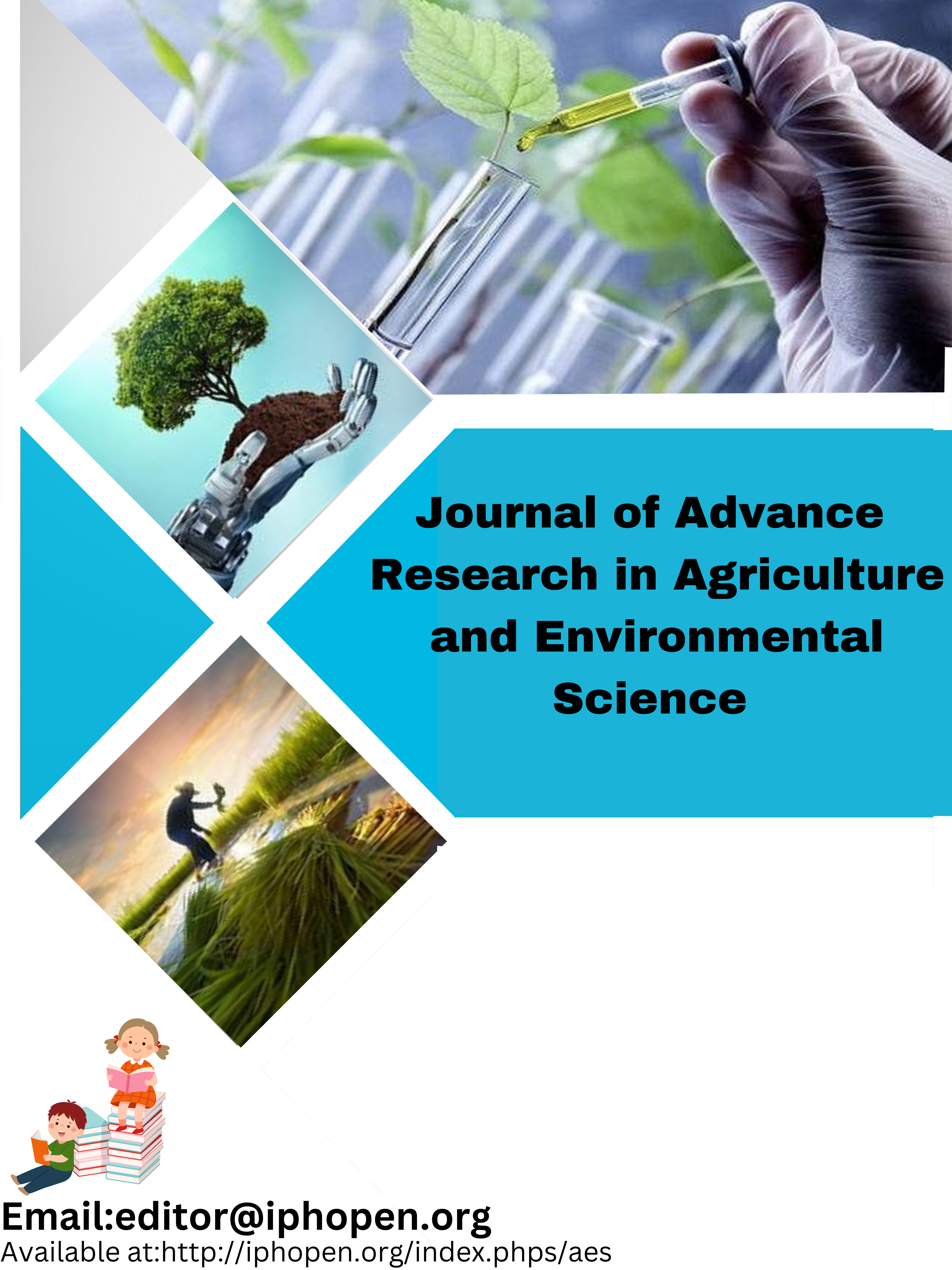ECONOMIC ANALYSIS OF YAM PRODUCTION IN SOTHERN TARABA, TARABA STATE, NIGERIA
DOI:
https://doi.org/10.5281/zenodo.15493916Keywords:
Profitability, Yam, Production and Southern TarabaAbstract
This study analyzed theeconomic analysisof yamproduction in southern Taraba, Taraba State, Nigeria.Specific objectives were todeterminethe cost and return of yam production, analyze factors influencing profitability of yam productionand identifyconstraints faced by yam farmers in the study area. A multi-stage sampling technique was employed to select 170 yam farmers across the study areaand thedatawascollected using structured questionnaires. Data collected were analyzed using descriptive statistics, gross margin analysis, and a multiple regression model. Results showed that yam production is highly profitable, with an average gross margin of ?2,161,138.57 per farmer, driven by both market sales(N241,5456.79) and home consumption (N120,001.24).Factorsinfluencing profitabilityofyam production showsthatland, yam sett,fertilizer, agrochemicals, labor,and staking materials weresignificant at 1%leveland had a positive
influence on the output. However, major production constraints identified were inadequate capital ranked 1st with a mean of 4.49, high labor costs (4.12), poor accesstoroads (4.02), lack of storage facilities (3.90), and high costof yam setts (3.78). The study concludedthat while yam production presents a viable income source,its profitability could be enhanced through improved access to land, subsidized inputs, mechanization, and infrastructure development. It was recommended that Secure and equitable access to arable land should be promoted through improved land tenure systems and land development initiatives.
References
Abiodun, O., and Titus, B. (2006). Production efficiency in yam based enterprises in Ekiti State, Nigeria.Journal of Central European Agriculture.
Adams, S.,andNkoro, E. (2021). Optimizing Yam Production in Rivers State: Insights from a Cobb-Douglas Model Analysis.Journal of Business and EconomicOptions,4(2):1-6.
Adenuga, A. H., Muhammad-Lawal, A.,andRotimi, O. A. (2013). Economics and technical efficiency of dry season tomato production in selected areas in Kwara State, Nigeria. AgriculturalEconomics Review, 11(1): 19–28.
Ayala, S., and Rao,E. P. (2002). Perspectives of soil fertility management with a focus on fertilizer use for crop productivity.Current Science,82(7);797-807.
Balana, B. B., andOyeyemi, M. A. (2022). Agricultural credit constraints in smallholder farming in developing countries: Evidence from Nigeria.World Development Sustainability,1, 100012.
Binge, B., Jalango, D.,andTesfaye, L. (2023). Post-harvest losses management through climate smart innovations: A collaborative approach among value chain actors.
Danladi, B.,Olayiwola, S. A., and Gizaki, J. L. (2024). Effect of livelihood diversification and technology adoption on food security status of rice farming household in Southern Taraba, Taraba State Nigeria.IPHO-Journal of Advance Research in Agriculture and Environmental Science [ISSN 3050-8843],2(11): 01-08.
Jiya, S. B. (2022).The Impact of Climatic Variability on Yam Production in Shiroro Local Government Area,Niger State, Nigeria(Doctoral Dissertation).
Komolafe, S. E., Adesiji, G. B.,andAkanbi, S. U. O. (2022). The contribution of yam farming activities to livelihood of farmers in Ekiti State, Nigeria.Jambura Agribusiness Journal,4(1);1-12.
Musa, M., Shuaib, H.,andOgidan, M. (2023). Food Security and Produce Storage, the Nexus: AttainingSustainable Yam Production in Nigeria.Available at SSRN 4495555.
Nanbol, K. K.,andNamo, O. (2019). The contribution of root and tuber crops to food security: A review.J.Agric. Sci. Technol. B,9(10.17265):2161-6264.
Ogunniyi, L. T.,andOladejo, J. A. (2011). Technical efficiency of tomato production in Oyo State, Nigeria.AgriculturalScience Research Journal, 1(4):84–91.
Olawuyi, Y. O. (2021).Nutritional Characterisation of Selected Yam Varieties and Contribution of Yam ToNutrient Intake In Ekiti State, Nigeria(Doctoral Dissertation).
Rukwe, D. T., Aboki, E., Luka, P., and Nyam, C. M. (2020). Economics of sesame production among smallscale farmers in southern part of Taraba State, Nigeria.Journal of Agricultural Economics, Environment andSocial Sciences,6(1): 103-112.
Simpa, J. O.,andNmadu, J. N. (2014). Profitability of Small-scale Yam Farms in Kogi State, Nigeria.Journal ofApplied Agricultural Research,6(2), 95-105.
Twumasi, Y., Merem, E. C., Fageir, S., Olagbegi, D.,Wesley, J., Coney, R.,andEmeakpor, S. (2024). ExploringShifts in Yam Production Trends Along Nigeria’s Southern Region.Exploring Shifts in Yam Production TrendsAlong Nigeria’s Southern Region.
Wumbei, A., Gautier, S. K. N., Kwodaga, J. K., Joseph, D.F.,andGalani, Y. J. H. (2022). State of the art ofyam production.
Downloads
Published
How to Cite
Issue
Section
License

This work is licensed under a Creative Commons Attribution-NonCommercial-ShareAlike 4.0 International License.
Author(s) and co-author(s) jointly and severally represent and warrant that the Article is original with the author(s) and does not infringe any copyright or violate any other right of any third parties and that the Article has not been published elsewhere. Author(s) agree to the terms that the IPHO Journal will have the full right to remove the published article on any misconduct found in the published article.











